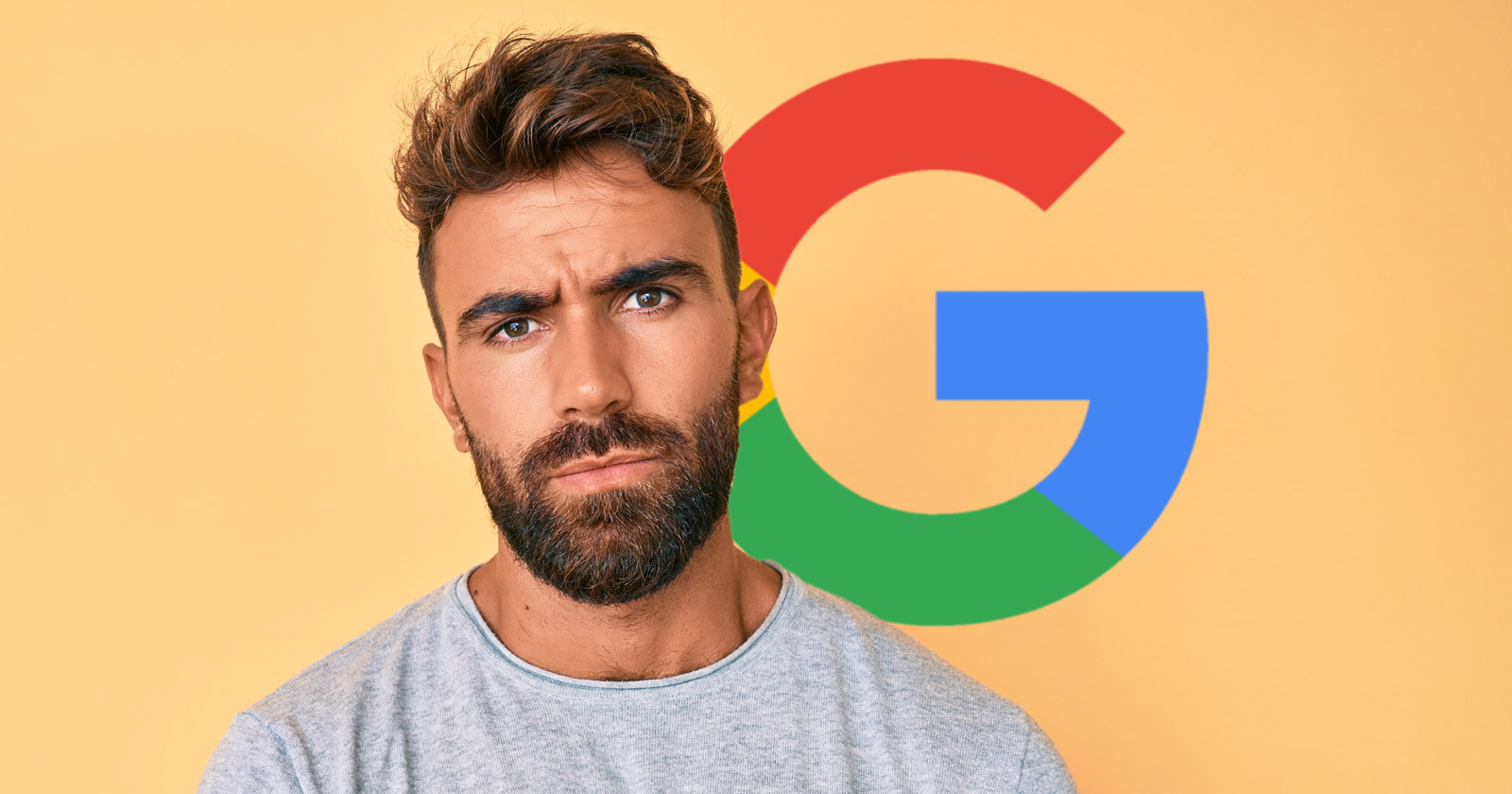Google’s Danny Sullivan posted details of a recent presentation he gave that focused on how the SEO community may have misunderstood how search rankings work, blaming the misunderstanding on Google’s guidance and documentation.
One of the examples he gave was how virtually the entire publishing industry adopted the idea of adding author pages and bylines based on the idea that Google’s algorithm was looking for that when in fact Google does not (according to Google’s Danny Sullivan).
However, the main point of the presentation wasn’t that Google doesn’t look for author pages.
The topic of the presentation was how Google’s guidance may not sufficiently take into account how those outside of Google may interpret it.
Danny wrote:
“The gap between what Google says to creators and what creators hear about being successful in Google Search needs to get better. That’s largely on us.
It’s something we’ll be working on. People-first content remains the path to success, but we hopefully can find better ways to communicate this…”
He used as an example of how some SEOs take what’s in their documentation or in the search quality ratings too literally when Google actually meant what was written in a broad sense and not in a specific sense.
Danny used as an example the documentation about how to assess a webpage, which was interpreted as indicating what is in Google’s ranking algorithm.
Danny explained:
“Our guidance is generally about a broad goal.
For example, we advise people to think of the product content in a way that *makes you want to trust it* (not Google, you – or a reader) with examples of what might cause people to trust content, such as background about an author….”
Danny means that when Google said to evaluate your content from the perspective of whether it instills trust with features like an author page, Google’s not saying that their algorithm is looking for author pages. Google’s just saying to evaluate your site in this way.
Danny talked about the challenge of communicating what Google wants:
“People focus on us talking about an author page as being something that people might expect from people-first content and believe Google itself wants that specific thing, as if we’re going to check for it and rank content better for having it (we don’t).”
How SEOs Should Approach Google’s Documentation
The next part of Danny’s presentation is remarkable because it completely changes how we should think about Google’s algorithms based on what’s in Google’s documentation. The next step from there is to then rethink what is generally understood about how Google ranks websites.
Danny presented a slide with a quote from Google’s documentation, with the parts that some SEOs mistakenly focus on.
The first slide shows what the documentation says:
“What we say: a broad goal
‘Does the content present information in a way that makes you want to trust it, such as clear sourcing, evidence of the expertise involved, background about the author or the site that publishes it, such as through links to an author page or a site’s About page?’”
The second slide is the same passage but with what SEOs take away from it:
- background about the author
- links to an author page
- About page?’
Danny goes on to say how those cherry picked sections of what Google advises then get turned into recommendations for things Google never intended.
And again, it must be emphasized that Danny was not wagging his finger at SEOs. He was taking ownership for the failure of the documentation to communicate clearly by taking into account how it would be perceived from the outside.
He posted:
“Further complicating things, some read our guidance and make definitive recommendations we’re not actually saying, like “If you have an About page, you rank better!”
You don’t.
It doesn’t work that way.”
Danny Encourages More Critical Thinking
Danny then asked SEOs to think more critically about what people are telling them, to look closer at what some SEOs are saying.
He advised that there’s a difference between someone expressing an opinion of what they believed versus someone saying that this is what Google does.
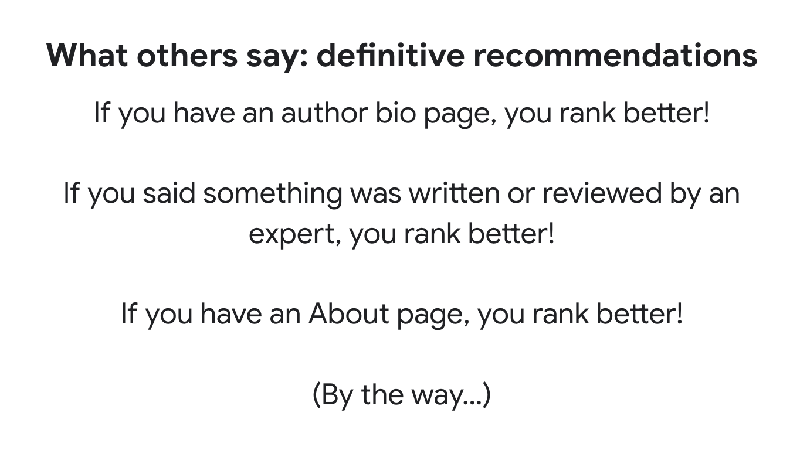
Danny advised:
“Nothing with Google ranking – or in life in general – is that simple.
If someone is telling you “this is what Google says to do,” are they making clear if it’s what we actually have said or if it’s their interpretation?”
True Meaning Of Google’s Guidance?
An important takeaway was the part of his presentation devoted to explaining that much of the documentation for recent updates was essentially rehash of the same guidance from decades and not really new or specific to these recent updates.
And it’s true that Google has been advising the same thing for decades about being helpful and people-first.
The only difference between then and now is that back then we all kind of knew Google didn’t have the technology to create ranking signals that corresponded to what they were trying to rank.
When Google says the same thing today it’s against the background of AI, neural networks and machine learning.
So, unlike in 2002 or 2011, we tend to accept that it’s plausible that what’s in the documentation is also in the algorithm in some form or another.
Danny shared a startling fact:
“Some people I’ve interacted with over the past few weeks believe our guidance about success with Google Search is new, that they now have to do something different.
But for us at Google, that’s confusing, because it’s not new.
The guidance is based on years-old and even decades-old guidance…”
He then posted the following slides to show how there’s no difference between Google’s advice then and now.
Guidance From 2022
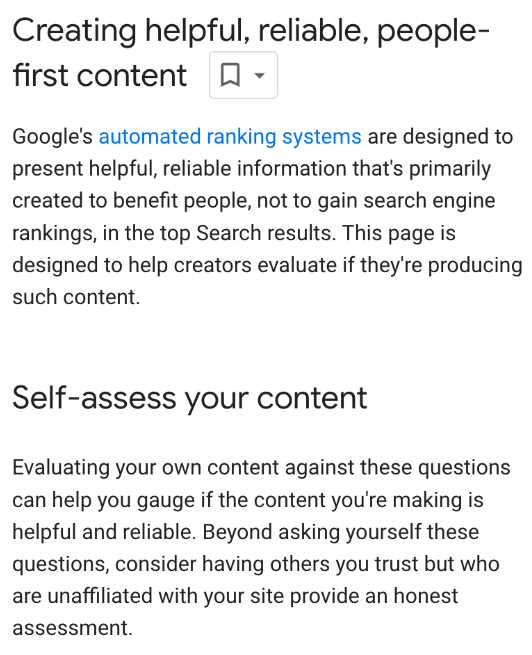
Guidance From 2011
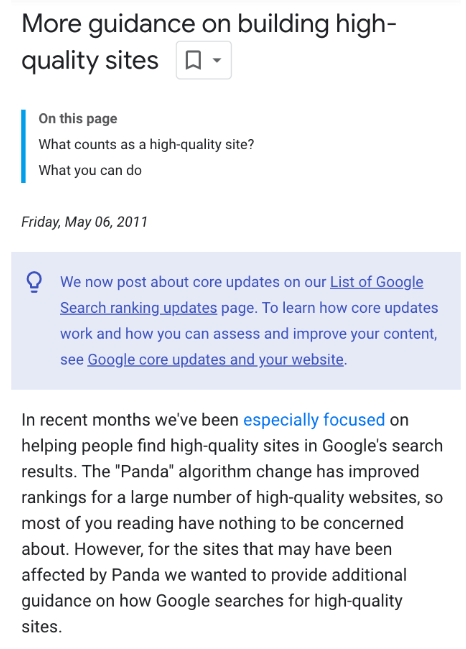
Guidance From 2002 Is Same As People-First Guidance Today
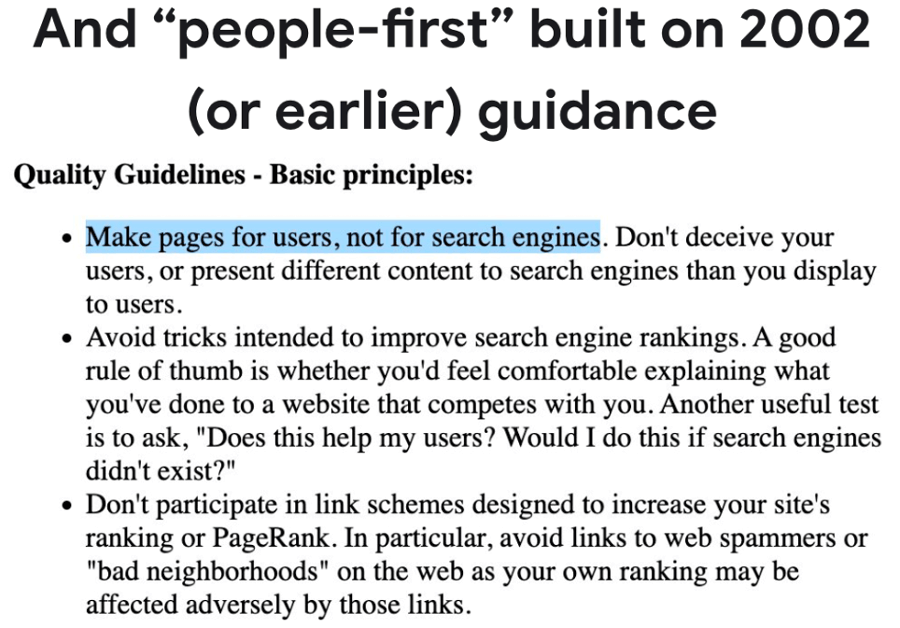
This Changes How We Think About Google’s Guidance
This really should give everyone a pause about how we should consider Google’s guidance.
As a consequence, that may also change how we should think about Google’s algorithms.
Earlier this week the big takeaway from Danny Sullivan’s presentation was his statement to “buckle up,” a statement that was taken out of context to mean that there were disruptive updates coming.
What Danny actually said in his presentation was far more consequential than that one phrase taken out of context. As can be seen clearly now is that the SEO industry might want to consider slowing down to rethink Google’s documentation because Google may be doing that as well.
